The world market of armored vehicles. Part of 3
BUSHMASTER PMV armored vehicle by Thales Australia
Asian-Pacific area
The Asia-Pacific region is projected to become the main growth area for the armored vehicles market over the next ten years. Australia, China, India, Malaysia, New Zealand, Pakistan, the Philippines, Singapore, South Korea, Taiwan and Thailand - all these countries have planned or are already implementing large-scale programs for the development and purchase of armored vehicles. The bulk of the needs are tactical trucks, the main combat Tanks (MBT) and armored personnel carriers.
Project Australia under the designation Project Land 400 Phase 2 is the largest arms procurement program of the Australian army. In September, 2015, the companies BAE Systems and Patria (Saab supplies the main subsystems and provides operational support) teamed up to offer the AMV35 8X8 Combat Reconnaissance Vehicle (CRV) reconnaissance vehicle, while Rheinmetall and Northrop Grumman offered a new version of the BOXER 8XXNUMNX Under the Land 8 program, in the period from 400 to 2020, the army fleet of BTR M2025AS113, ASLAV and BUSHMASTER armored vehicles will be replaced. The first CRV cars will arrive in 4 year, and initial combat readiness is scheduled for 2021 year. At the moment, approximately 2023 machines are needed, although this number can be reduced. All applicants guarantee that most of the work on the Land 1100 program will be carried out in the country. Similarly, the Supacat EXTENDA HMT, for which Australia has signed a contract worth 400 million dollars for 98 machines for special operations forces, will be manufactured at local facilities.
Under the Land 121 retrofit program, the Australian government will purchase 7500 machines in light, medium and heavy versions. The implementation of the Land 121 project, also known as Project Overlander, was entrusted to RMMV Australia, with which a contract was signed in 2013 for the Australian Defense Forces 2500 logistics vehicles. Approximately 2500 trucks were ordered as part of the Phase 3B Phase, according to which they will be shipped from 2016 to 2020 year.
The Australian Army has ordered BUSHMASTER PMV 1052 armored vehicles from Thales Australia. The company received several export orders for BUSHMASTER machines, including 86 for the Dutch army, 30 for the UK, while Jamaica ordered 12 and Japan 4 machines.
Bangladesh currently implementing a multi-year armored vehicle upgrade program that provides for the modernization of outdated main battle tanks (MBT) T-54 / Type 59 and Type 69.
Interest in the market India has been declining for the last three years, because a clumsy mentality leads to fatigue and apathy of consumers, who are dissatisfied with the way long-term contracts are carried out, as well as with bureaucratic red tape, restraining technical progress. Although the Indian market is still popular and remains a priority for the majority of manufacturers of armored vehicles (BM), but negative trends are still there. Much to the admiration of the industry and the surprise of some analysts, India began a program on a promising FICV (Future Infantry Combat Vehicle) infantry fighting vehicle. This is the largest Indian terrestrial program for the entire history country. The future of FICV was uncertain until relatively recently, but the Indian Ministry of Defense finally released a document inviting 10 companies to present their projects. It is expected that the Modi government will replace the outdated BMP-1 and BMP-2 parks with up to 2610 FICV machines, for which 10 billions of dollars will be paid. Indian defense companies, including Bharat Forge and Ashok Leyland, will participate in the tender under the Do in India investment program. But the probability of a victory of the state military factory Ordnance Factory Board is very high. The Department of Defense will finance approximately 80% of the cost of two FICV prototypes, one of which will be selected for mass production after two years of operational testing. Two applicants for the FICV program will be selected by the end of 2016 of the year, and each of them will produce prototypes of the new machine in 2017. In order to share the economic benefits of the contract, the winner will be given an order for the manufacture of FICV 1566 machines, while the runner-up company will manufacture the remaining 1044 platforms.
India also plans to acquire X-NUMX T-1657 tanks no later than 90, of which 2025 will be manufactured under license in local squares.
In 2015 year Indonesia chose Ukroboronprom to supply floating armored personnel carrier BTR-4 8x8 with a total number of 50 vehicles. The local ANOA 6x6 BTR, developed and manufactured by the Indonesian company PT Pindad, is in fairly good demand because it has been sold to Malaysia, Iraq, Nepal, Oman and Bangladesh since 2009.
Indonesia also ordered 28 upgraded MARDER 1A3 BMPs from Rheinmetall. In December 2012, the contract was signed for another 14 machines. Eight more BMP MARDER 1A3 will be supplied to spare parts. The last batch of six MARDER 1A3 was received by Indonesia in September 2015 of the year.
The PEACEKEEPER PRV (left) of the Singapore Army will take on the tasks of the V200 armored vehicle to ensure the safety and security of the camps and key facilities of the island nation. The V200 armored vehicle will be phased out gradually from 2016 onwards.
Due to rising tensions in the Asia-Pacific region, the Ministry of Defense Japan requested an increase in spending on 2,4%, which in numbers is 47,25 billion dollars. In the budget request, Japan provided for the receipt of a billion-dollar armored personnel carriers, which should be replaced by the outdated Type-7,4 armored personnel carriers. Japan will also buy BAE Systems' AAV96 amphibious assault vehicles with the aim of leveling the balance of power with China on this type of vehicle. Japan’s development of amphibious forces has been declared a priority direction as a result of China’s ambitious plans to modernize its naval component. The Japanese self-defense forces also want to receive command-staff and evacuation vehicles, since they want to organize a new unit for the preparation of landing operations. However, Japan still has to give the go-ahead for the development and purchase of a floating amphibious assault vehicle, which will be completely Japanese. The RCB intelligence machine is also included in the budget request.
Simultaneously with the strengthening of their fleets of floating vehicles and vehicles of medium and light categories, Japanese self-defense forces are reducing heavy armored vehicles from about 700 MBT to almost 300 units. The Type 10 tank continues to be of interest to the Japanese army, which currently needs a total of 97 vehicles, which is significantly less than the initial plans for purchasing more 500 vehicles. In 2010, the Japanese ordered 13 Type 10 tanks, in 2011, 13 machines and 2012, 16 machines; Today 80 such tanks are made.
Mitsubishi Heavy Industries (MHI) will be the leading manufacturer of self-propelled guns Manoeuvre Combat Vehicle (Type 16); The first vehicles are expected to go into service with the Japanese army in 2016 after extensive testing. At the 2016 fiscal year, the Department of Defense requested funding for another 36 Maneuver Combat Vehicle (MCV) installations for the four machines supplied and the installations previously ordered by 99. The Japanese Air Force has a need for 60 new Kawasaki C-2 transport aircraft that have an 3023 nautical mile range with a load of 30 tons. One C-2 can transport one MCV with a crew and ammunition. For the transfer to the remote island of one division from the 12 installations of the MCV, you may need 20 and more C-2 aircraft. In addition, four BUSHMASTER PMV armored cars were ordered.
Largest in Malaysia armored vehicle manufacturer Deftech is successfully implementing the AV8 8x8 BTR project, which is a next-generation multipurpose multi-task wheeled BM. The project, based on the Turkish FNSS PARS 8x8 armored personnel carrier, is being implemented in collaboration with the same company. Qualification tests were carried out last year and the first 8 machines were supplied to the Malaysian army in December 2014, and in 2015, more 19 machines were supplied. Before the end of 2016, another 56 BTR AV8 should be supplied. Until 2018, a total of 257 machines are expected to be delivered in 12 versions. The AV8 platform will replace the fleet of legacy machines, including the BBMA SIMBA (6x6) and CONDOR (4x4).
Although the domestic market Pakistan begins to build momentum, the share of imports of military products remains very large, amounting to 4% of the global supply of arms in the 2014 year. In recent years, the government has not been very willing to buy machines from surplus other armies, but in September 2014, the United States Congress approved the sale of 160 Navapar MaxxPro MRAP vehicles (with enhanced mine protection and improvised explosive devices). Also last year, contracts were signed for the production of four-wheel armored vehicles of the company GD DRAGOON and the Chinese eight-wheel armored vehicles VN1. The following fact speaks eloquently about the state of the Pakistani industry: the contract for production by the state-owned Heavy Industries Taxila company of the BURRAQ MRAP armored vehicle was reportedly not signed due to lack of funds and was replaced by the import of MaxxPro machines.
At a ceremony in July 2015, the Minister of Defense Singapore introduced the new armored vehicles. The new PEACEKEEPER Protected Response Vehicle (PRV), which will replace the BM V200 (phased decommissioning will begin with 2016 year), was developed by the army and the DSTA Defense Research Agency. It is a modification of the armored vehicle HIGUARD MRAP manufactured by the French company Renault Trucks Defense. PEACEKEEPER is equipped with a remotely controlled combat module (SDM) with the ability to install three different systems. weapons: 40-mm automatic grenade launcher, 12,7-mm machine gun and 7,62-mm machine gun.
In August 2015, Singapore celebrated 50 years of independence, on the occasion of which a military parade was held, at which 177 vehicles and platforms of the Singapore Air Force, police and civil defense forces were presented. Following the PEACEKEEPER, the LEOPARD 2 AEV (L2-AEV) armored engineering vehicle, developed by Rheinmetall and RUAG Defense based on the LEOPARD 2 MBT chassis, was put into service by the Singaporean army. A new army ambulance based on the modified Ford 550 chassis has also been put into service. It is clear that the car can be upgraded by installing additional armor to protect against bullets and shrapnel. Also for the first time, new variants of the BRONCO articulated all-terrain vehicle were shown, including a machine equipped with an extended demining module and another machine with a retractable communication antenna.
The Singapore armed forces consist of 136 armored vehicles TERREX AV-81, and in September 2015, ST Kinetics introduced the latest addition to this family of proven armored platforms. The advanced TERREX 2 armored vehicle with the 8х8 wheel formula combines mobility, innovative solutions to increase survivability and network-centric capabilities that contribute to a clearer coordination of the armed forces. The TERREX 2 armored vehicle from ST Kinetics already has a successor in the newest version of the TERREX 3. This is the most innovative project to date, with high lethality and survivability both on land and on water. The TERREX 2 and TERREX 3 double V-shaped hull perfectly protects against mines and improvised explosive devices (IEDs) while maximizing the size of the compartment to be inhabited without compromising the payload of the vehicle. The integration of advanced solutions in the field of vetroniki, such as customizable driver touch displays on the dashboard, a full-view surveillance system, a driving system with closed hatches and a navigation system, can significantly increase the situational awareness of the crews of armored vehicles TERREX 2 and TERREX 3 when working with closed hatches.
Defense industry South Korea It is sufficiently developed and actively exports technology in order to obtain good revenue from their sale, but at the same time it does not forget its own military. MBT K2 BLACK PANTHER in 2016, the year begins to change the previous model - tank K1. The South Korean army issued an initial order for 100 vehicles, although there is an option for another 400 tank. Began mass production of MBT K2, while for several years already produced BMX K21. It is planned that the 450 K21 Next Generation IFV (NIFV) BMP will replace the K200 series of infantry fighting vehicles.
State Institute of Defense Technologies Thailand showed BM Black Widow SPIDER 8x8, developed over the past few years. Ricardo and the Institute completed the initial stage of the technological development of this machine and proceeded to the next stage. The machine will have a V-shaped case and protection levels corresponding to the STANAG Standard 4 Level. It will meet the needs of the Thai army for advanced armored vehicles, which include 200 MBT, which must be purchased before 2018 year. The country also ordered the First WIN 21x4 Armored Multi-Purpose Vehicle (AMPV) multipurpose armored vehicle from Chaiseri and at least 4 BTR-240E3, which are shipped from Ukraine (1 units are currently shipped). Planned modernization of the light tank SCORPION. In addition, 187 of Ukrainian T-10 PLOT-M tanks was received, but due to supply disruptions, Thailand will only buy 84 of such tanks (although 40 units were ordered), and the contract for 200 tanks was transferred to China, which will deliver its MBT tanks 150.
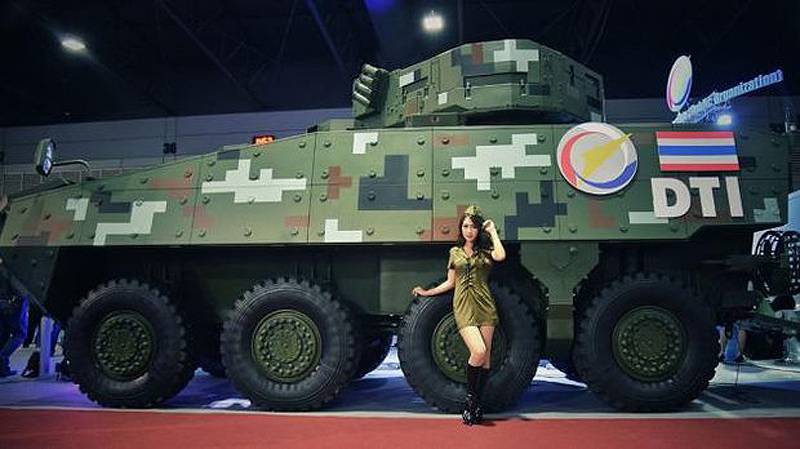
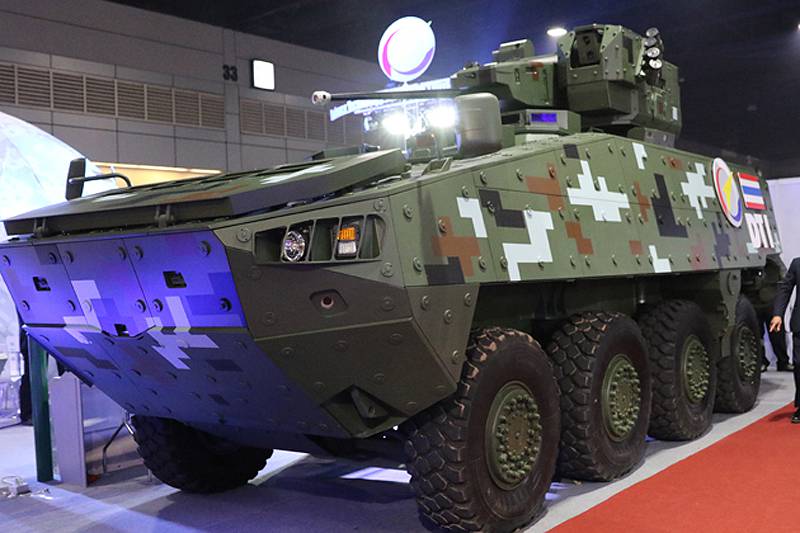
Thailand armored Black Widow SPIDER 8x8
Now Vietnam planned to upgrade its M-113 armored personnel carriers.
North America
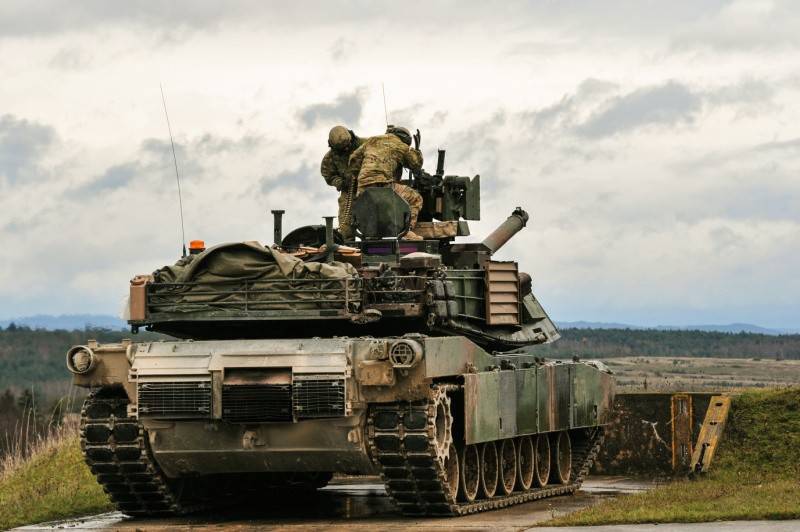
US soldiers charge the 12,7-mm machine gun mounted on the M1A2 SEPv2 ABRAMS MBT during shooting exercises in Germany in November 2015. The shooting was the highlight of the Combined Resolve V exercise, in which more than 4600 troops from NATO and partner countries 13 took part.
Despite high competition, budget constraints and contract problems in recent years, Соединенные Штаты Америки still considered one of the most attractive regional markets for most defense companies.
In the new light armored car JLTV (Joint Light Tactical Vehicle), a good protection of the MRAP category car is combined with off-road characteristics and maneuverability of an unarmored all-wheel drive vehicle. Oshkosh competed in this project with a consortium led by Lockheed Martin and AM General. All three participants in the 2014 year, put in the army to evaluate the prototype for 22, while investing billions of dollars in the infrastructure of the new project. Finally, in August 2015, Oshkosh was named the winner. In March, 2016, the company began fulfilling a contract to manufacture the first batch of 657 machines. Under the original contract, the Army and the Marine Corps will purchase a total of 16901 machines in accordance with current plans, and the Ministry of Defense will make the decision on full-scale production in the 2018 fiscal year. First of all, XLUMX JLTV machines for the Marine Corps will be released. Initial alertness for the Marine Corps is scheduled for 5500 year and completion of deployment for 2018 year. The army also expects to receive the first cars in 2022 year. Army purchases will continue until about 2018; As a result, a significant part of the tactical vehicle fleet will be replaced by new 2040 vehicles.
The winner of the project on a light tactical armored car JLTV was the company Oshkosh
At AUSA 2015, Rafael showed a lightweight version of the TROPHY LV active protection system mounted on an Oshkosh M-ATV armored car. This KAZ has proven itself in protecting the crews of Israeli tanks from anti-RPG missiles and other threats since its deployment in August 2009. The Rafael Mini SAMSON combat module with long-range SPIKE anti-tank missiles is also installed on the demo.
The M113 BTR is one of the most common tracked vehicles in the world; In the photo is an armored personnel carrier from the 215 artillery battalion of the Israeli army. Israel is going to replace the M113 fleet with a local EITAN 8x8 machine, which will start production in 2020
The program for the AMPV (Armored Multipurpose Vehicle) multipurpose armored vehicle is carried out by BAE Systems, which won the contract for the development and preparation stage of EMD production worth 1,2 billion dollars, after GDLS withdrew its candidacy in the competition. AMPV, which should replace the M2900 113 BTR, will cost the Pentagon about 13 billions of dollars. After the EMD phase, the AMPV project provides for a ten-year production cycle with an output of 300 machines per year. BAE will deliver the 29 AMPV tracked in five versions in the next four years. The army will receive a total of 13 AMPV machines for 2097 years.
In September, the US Army 2014 issued a requirement for three light armored vehicles in order to simplify the transition to a larger expeditionary force and increase the level of air transportation. These three vehicles, MPF (mobile protected firepower), ULCV (ultra-lightweight combat vehicle) and LRV (light reconnaissance vehicle), were presented at the annual army conference in Fort Bening.
According to available information, the ULCV project is the highest priority of the army. The platform can be transported by helicopter suspension or transport aircraft aviatione.g. C-130 or C-17. Six companies took part in the control tests in 2015 to determine the requirements; The car should weigh about 2 tons and have a range of up to 300 miles.
ST Kinetics, in collaboration with SAIC, offered its TERREX 2 vehicle as part of the Marine Corps program for the Amphibious Combat Vehicle Phase 1 Increment 1 (ACV 1.1) floating combat vehicle; In November, 2015, they received a contract worth 121,5 million dollars for the design and preparatory stage of this program. The second contender for the ACV 1.1 project, BAE Systems, received a contract worth 103,8 million dollars. Each participant will supply experienced machines for testing 16 by the end of 2016. The tests will go the whole 2017 of the year. The ACV requirement appeared due to the failure of the Expeditionary Fighting Vehicle (EFV) expeditionary vehicle program, which was launched to replace the current AAV (Amphibious Assault Vehicle) amphibious assault vehicles. After testing within the framework of the ACV 1.1 program in 2018, the winner will be announced for the supply of 204 machines, while the ACV 2.1 program will deliver up to 470 new machines, but only tracked.
The development of a promising Future Fighting Vehicle (FFV) combat vehicle, which replaced the closed Ground Combat Vehicle (GCV) program, will proceed in a more balanced and cautious manner as the army clarifies the capabilities it wants, as well as the availability of technology and cost. .
Since 2009, the government Canada It was not so successful in the implementation of programs for the development and purchase of armored vehicles. The CCV melee project (Close Combat Vehicle) was eventually closed after several years of uncertainty and dissatisfaction with the Canadian Department of Defense. The LAV III modernization program is currently being implemented by GDLS-Canada (GDLS-C), which has received a contract from the state for the modernization of these vehicles worth 253 million dollars. In October, 2011, the company GDLS-C received its initial billion dollars to upgrade 550 machines LAV III with an option to upgrade more 80 machines. The first 66 upgraded machines were delivered in 2013 year. According to available information, the final number of machines should be 616 pieces. The government issued a contract to Textron Systems Canada in 2012 for the supply of TAPV (Tactical Armored Patrol Vehicle) to the Canadian Army 500 tactical patrol vehicles and the corresponding long-term logistics. After solving the problems associated with the mobility of this armored vehicle, Textron has now begun to supply vehicles to the army. It also provides an option for another 100 machines with a total value of up to 534 million dollars. The TAPV armored personnel carrier, intended to replace the lightweight BM COYOTE and the RG-31 patrol vehicles, is part of a larger project for a family of ground combat vehicles.
In addition to the TAPV program, the army is considering the development of additional combat capabilities, starting work on a project to upgrade its means of firing with indirect firearm.
Latin America
Many Latin American countries implement armored vehicle purchase programs, but in most cases these are lighter platforms for paramilitary structures than heavy armored vehicles. The armored personnel carriers of the MRAP category and with protection against IEDs are considered a priority for these countries, which are still leading the fight against local guerrilla groups, while more maneuverable and lightweight platforms with ballistic protection are considered as vital tools in the fight against drug trafficking.
Lately Argentina spent defense funds on the repair and modernization of military equipment, including the financing of the Center for the modernization, repair and conversion of armored vehicles, which is responsible for the modernization of the Army BTR M113, tactical trucks UNIMOG 416 and TAM tanks. On the agenda is the purchase of light armored vehicles 4x4 and 4x2. The information that Argentina became interested in Brazilian VBTP-MR GUARANI armored personnel carriers in the 8x8 variant and wants to order 14 vehicles, does not have accurate evidence, apparently, it never came to a real deal. But on the other hand, Argentina finally placed an order in June 2015 of the year for 110 wheeled amphibious vehicles 8x8 VN-1 of the Chinese company Norinco. Argentina will be licensed to assemble these machines at its Tandanor-CINAR shipyard.
GLADIATOR II armored car by Groupo Inbra Filtro with installed Ares REMAX DBMS
Army Bolivia 36 light tanks SK-105 KURASSIER and 24 reconnaissance vehicles are equipped with EE-9 CASCAVEL reconnaissance vehicles, as well as various armored personnel carriers, including M113, EE-11 URUTU, M9 Half-track, V-150 and Mowag ROWLAND (Mowag ROWLAND (on the service).
After several years of recovery and major investments in major modernization programs, defense spending Brazil in 2015, 5 was reduced to billions of dollars, which increases the risk of delays and uncertain delays in these projects. A striking example is the production and supply for the Brazilian army of floating armored personnel carriers VBTP-MR GUARANI 6x6, the project for which is part of a broader program for the modernization of military equipment. At the start of the 2014 of the year, the 33th motorized infantry battalion received the first 13 armored personnel carriers, it became the first division of the regular army to receive new vehicles. In total, 2044 machines will be manufactured, the deliveries of which will go up to the 2030 year. VBTP-MR armored personnel carriers will replace the fleet of obsolete URUTU CASCAVEL vehicles. Conceived by the Army Scientific and Technical Innovation Center, the new machine was developed jointly with the Italian company IVECO Defense. The first export orders were announced in 2014, when the Lebanese army ordered the first 10 machines; At the same time, the production of the 8x8 variant for the Marine Corps also began. More recently, the Ministry of Defense selected local bidders Avibras Industria Aeroespacial and Iveco Veiculos de Defesa as bidders for the program on a light multi-purpose protected machine VBMT-LR 4x4. In April, 2016, the winner was named Iveco Veiculos de Defesa, which received a contract for the production of the first 32 machines. These machines will be able to meet the urgent needs for peacekeeping vehicles; the first batch may be followed by two batches of 77 machines.
Production of armored personnel carriers VBTP-MR GUARANI 6x6 weighing 18 tons for the Brazilian army is one of the largest programs for the purchase of military equipment currently underway in Brazil. At the LAAD 2015 exhibition, the Iveco VBTP-MR armored personnel carrier with two new RPG protection systems, Flexfense and Hybrid Slat Fence (HSF) developed by Plasan was presented.
2011 to 2015 year defense spending Chile decreased from 4,2 to 2,6 billion dollars. In the BM sector, the army is mainly engaged in maintenance and repair, spare parts, night vision and night combat technologies, target designation and target reconnaissance systems. Much attention is also paid to the development of a network of training centers in order to increase the level of professionalism and universalism of the crews. In addition to the LEOPARD 2A4 and LEOPARD 1V tanks (from the presence of the Greek army), the Chilean armed forces are armed with BMD MARDER and YPR-765, M-113 A1 / A2 and PIRANHA BTR; the marines are also in service with the new SCORPION light tanks and the Mowag ROWLAND 4x4 armored vehicles.
Defense budget Colombia at 2015, the year (including the police) was defined in 12,2 billion dollars with the possibility of reducing it in subsequent years when a peace agreement was reached with the rebel group FARC. The Colombian military bought 2013 Textron COMMANDO Advanced 67x4 4 armored troop-carriers in 2014, deliveries of which were completed in 2014 year. INKAS Armored Vehicle Manufacturing announced in May XNUMX that it would install four new INKAS HURON BTRs to the Colombian police to perform tactical tasks, mainly border patrols.
Ecuador bought Venezuelan multipurpose machines TIUNA UR-53AR50. In April, 2015, the army received 709 HOWO series trucks from China National Heavy Duty Truck Corporation (CNHTC) program of the Ecuadorian government worth 81 million dollars.
Defense budget Of Mexico increased in 2015 by 11%. As part of this strategy, the Department of Defense launched in June 2015 the 105 procurement program for new BMs, as well as the ERC 90 LYNX 6X6 armor reconnaissance program for Panhard Defense. Currently, the Mexican army is armed with 207 armored vehicles ERC 90, VBL 4x4, as well as armored personnel carriers VCR 6x6. In the 2014 year, the XUMUMEE 2200 of former American armored cars were sold to Mexico for 245 million dollars. The growth in the production of commercial armored vehicles in the country is due to the high levels of crime in the country. This market is booming, several local and foreign companies have built assembly plants in Mexico. Growth in sales of armored vehicles for the civilian sector is higher than in other Latin American countries, as the number of criminal cartels and criminal groups grows. This threat could adversely affect the future of the Mexican economy.
Army Paraguay It is armed with 6 to 15 light and medium tanks, as well as a fleet of armored personnel carriers M-9 and EE-11 and upgraded armored vehicles EE-9 CASCAVEL.
At the beginning of 2015, the Department of Defense Peru reported on the purchase of 106 combat vehicles and 10 MBT as part of the Harpay Nina Army Renewal Program (firepower). The project is part of a modernization plan for the Ugarte military. Priority in it is given to the new BMP, only until it is decided wheeled or tracked platforms. There are many options, for example LAV III, YPR-765A1, MARDER 1, BTR-80, BMP-1 / 2, PANDUR, M113, Spanish BTR-600A and BMP-80. In addition, in May 3, GDLS-C unveiled its first two LAV-II CAYMAN 2015x8 armored vehicles from 8 ordered by the Peruvian army in 32.
Uruguay He is armed with a number of tanks, and in 2011, Russia bought for his police TIGR GAZ-233036 SPM-2 4X4 armored vehicles. In accordance with the Operation Soldado Amigo program, military personnel will be transferred on light and medium vehicles to distant towns to help local people in construction and other public tasks.
Until now, being at odds with the United States and its allies, Venezuela continues to build relations with opposing West and Russia and China, including deals with military property. In June, 2015, Venezuela received from China the first batch of military armored vehicles from 557. Included in this delivery are wheeled BM VN-4 4x4, ABV-1 lamination machines and WTC-1 water cannons, as well as 200 NG2629 6X6 machines from Norinco. The plans provide for the purchase of a total of 2106 military vehicles from 2009 to 2019. Also for the Venezuelan Marine Corps Chinese floating armored personnel carriers VN-1 8x8 (export version ZBL-09) were supplied.
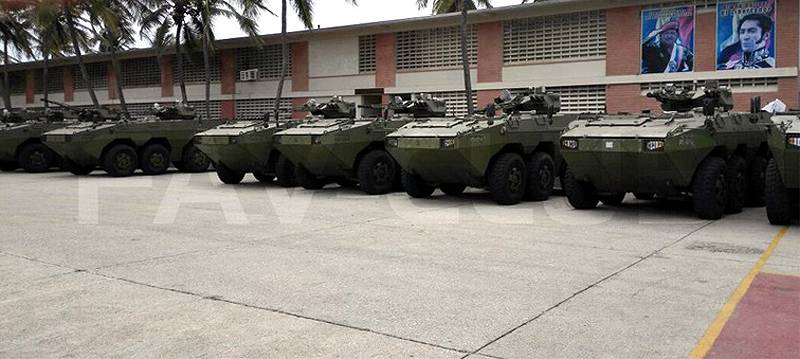
Delivered to Venezuela and handed over to the Marine Corps of Venezuela, the first batch of Chinese wheeled armored personnel carriers VN-2012 manufactured under the 1 contract of the year. Xnumx
Hack and predictor Aviator
The numerous advantages of armored vehicles are very convincing, they are indispensable on the battlefield. Thanks to this, the global market keeps afloat and continues to steadily recover from the economic crisis of 2008. However, the prospects for companies and the national industry related to the production of armored vehicles are less clear. If manufacturers of armored vehicles want to meet the needs of consumers in an increasingly unstable world, they must be able to create joint ventures and raise funds in order to finance new research projects and build new production facilities.
Materials used:
www.monch.com
www.wikipedia.org
en.wikipedia.org
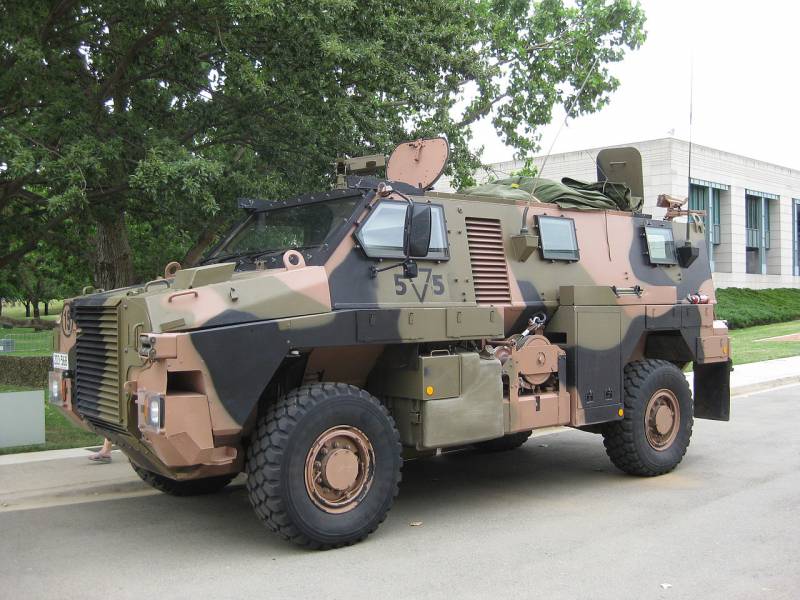
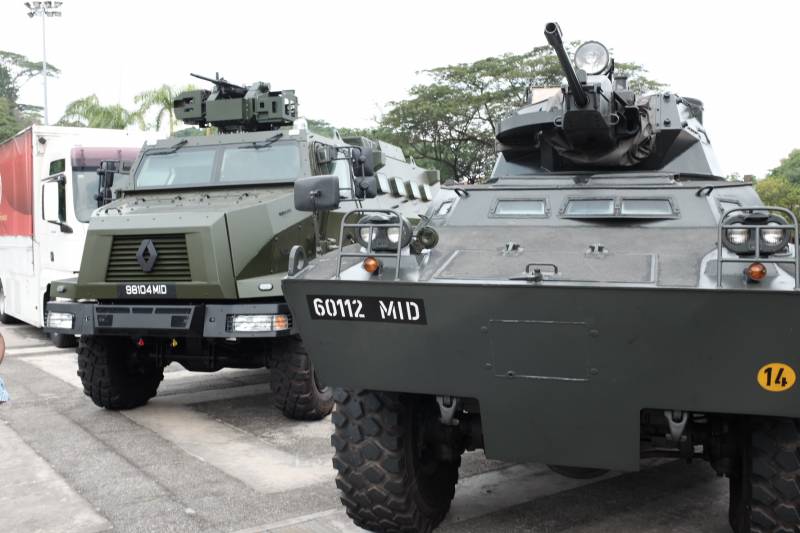
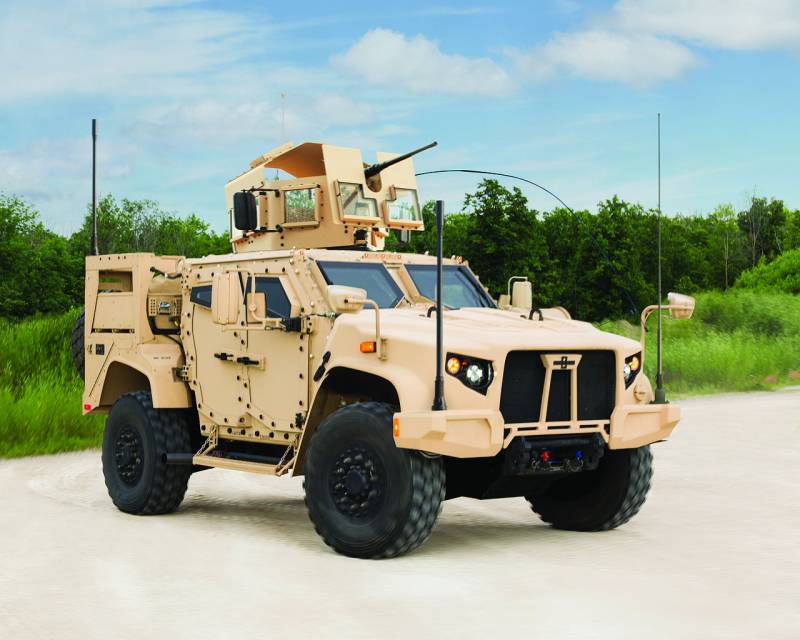
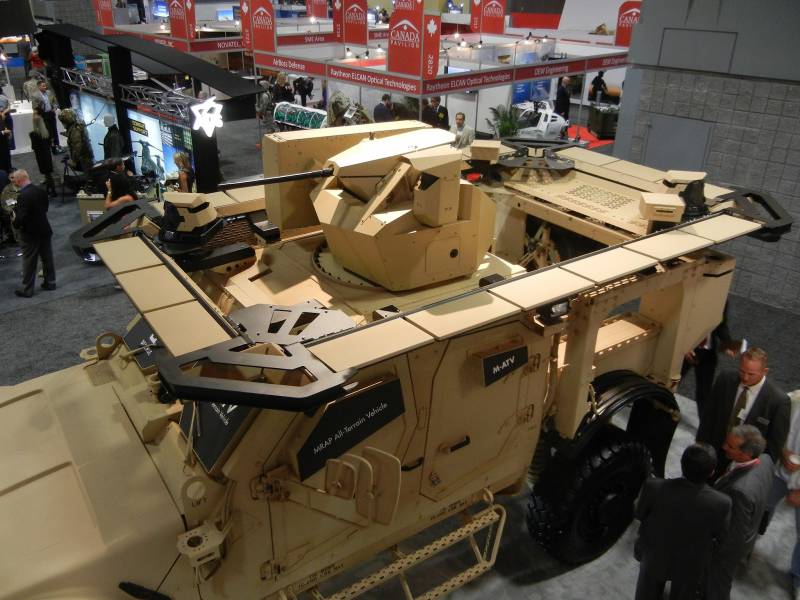
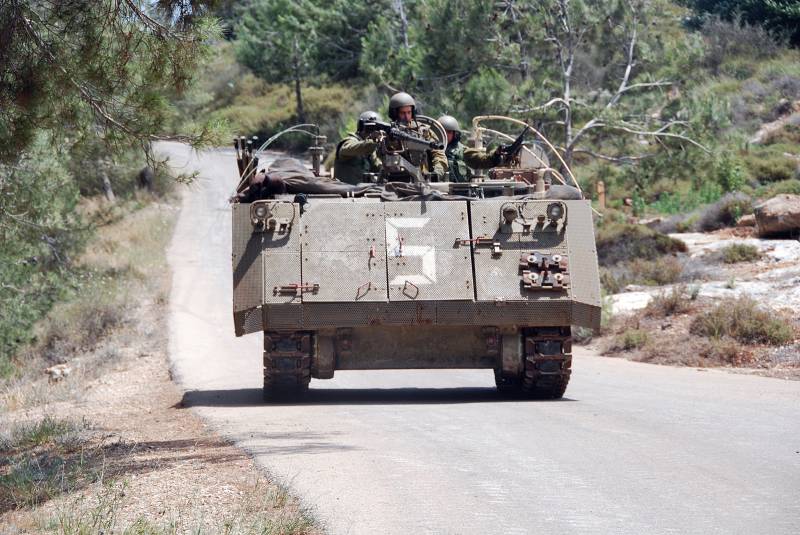
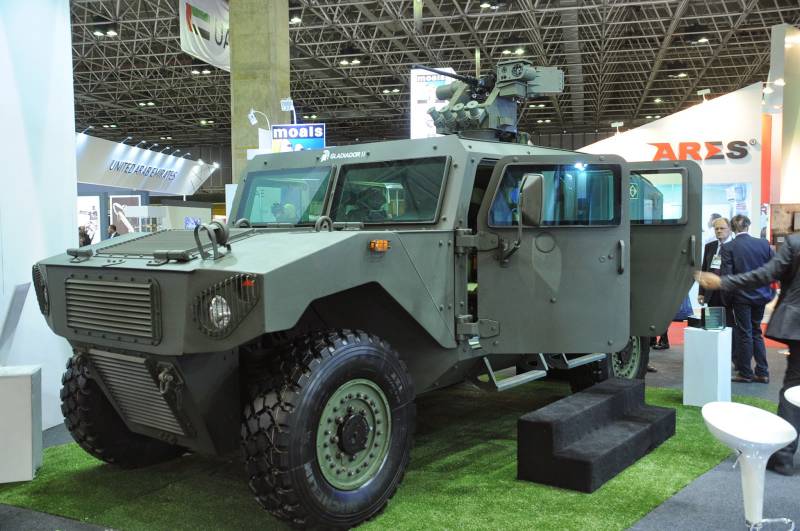
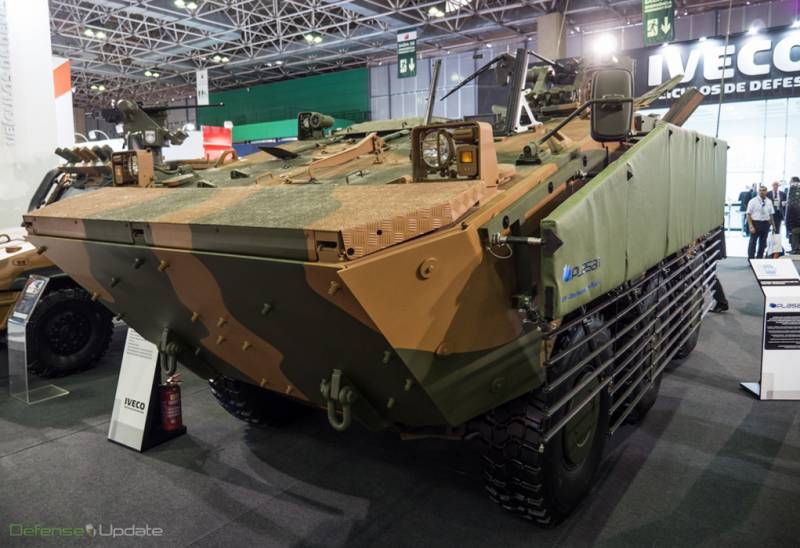
Information